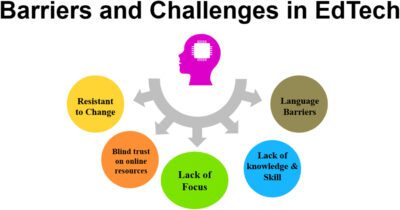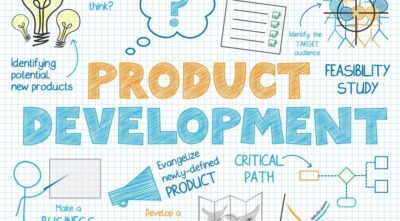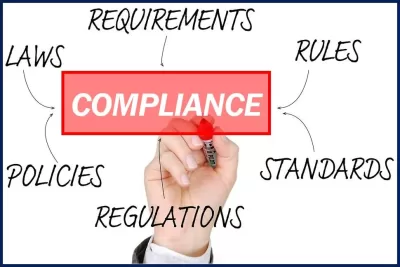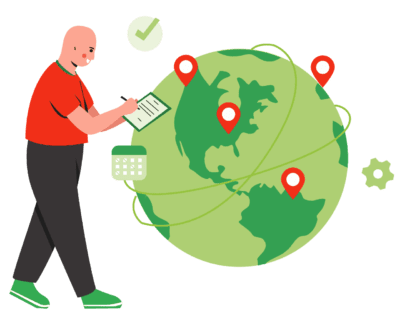You are likely well aware of the EdTech business challenges that come with being in the industry. From keeping up with the latest technology to navigating the ever-changing landscape of education, there is a lot to consider. Fortunately, there are equally plenty of EdTech business solutions available to address the challenges.
One of the biggest EdTech business challenges today is the need to constantly innovate. With new technologies emerging all the time, it can be difficult to keep up and stay ahead of the curve. There is also the challenge of creating products that meet the needs of both educators and students while remaining affordable and accessible.

Despite these challenges, there are a lot of opportunities for success in the EdTech industry. By focusing on areas like personalized learning, gamification, and data analytics, businesses can create products that meet the needs of modern learners. Additionally, partnering with schools and other educational institutions allows edtech businesses to gain valuable insights and access to new markets.
Related Posts:
1. Market Penetration Challenges
As an EdTech business, one of the biggest challenges you may face is penetrating the highly competitive market and reaching your target audience. This can be a daunting task, but with careful planning and execution, it can be achieved.
Understanding Target Audience
The first step towards market penetration is understanding your target audience. This involves identifying the needs and preferences of your potential customers, as well as their demographics and psychographics. You can use market research tools such as surveys, focus groups, and customer feedback to gather this information. Once you have a clear understanding of your target audience, you can tailor your marketing efforts and product offerings to meet their needs.
Competition Analysis
Another EdTech business challenge in market penetration is competition. There are likely to be several other EdTech businesses offering similar products or services. To overcome this challenge, you need to conduct a thorough analysis of your competitors. This involves identifying their strengths and weaknesses, as well as their marketing strategies and product offerings. By doing so, you can differentiate your business and offer unique value propositions to your target audience.
Regulatory Hurdles

Finally, regulatory hurdles can also pose a challenge to EdTech businesses. Depending on your location and the nature of your business, you may need to comply with various regulations and standards. This can include data privacy laws, educational standards, and certification requirements. To overcome these hurdles, you need to stay up-to-date with the latest regulations and work closely with regulatory bodies to ensure compliance.
2. Technology Adoption Barriers
Implementing new technology in any organization can be challenging, especially in the education sector where the adoption rate is slow. Here are some common technology adoption barriers and solutions to overcome them.
Resistance to Change
One of the major barriers to technology adoption as an EdTech business challenge is resistance to change. Teachers and administrators may be hesitant to adopt new technology due to the fear of the unknown, lack of understanding, or the belief that traditional teaching methods are more effective.
To overcome this barrier, it is important to involve teachers and administrators in the decision-making process. Provide training sessions and workshops to help them understand the benefits of the technology and how it can improve teaching and learning outcomes. Encourage them to experiment with the technology in a safe environment and provide ongoing support and feedback.
Integration with Existing Systems
Another challenge is integrating new technology with existing systems. Educational institutions may have multiple systems in place, such as student information systems, learning management systems, and assessment tools. The new technology should be compatible with these systems to avoid disruption and ensure seamless integration.

To overcome this barrier, it is important to conduct a thorough assessment of the existing systems and identify any potential compatibility issues. Choose technology that is flexible and can be customized to meet the specific needs of the institution. Work with vendors to ensure that the technology can integrate with existing systems and provide ongoing technical support.
User Training and Support
Finally, user training and support can be a significant barrier to technology adoption. Teachers and students may not have the necessary skills or knowledge to use the technology effectively, leading to frustration and disengagement.
The solution to this challenge is to provide comprehensive user training and support. Develop user manuals and online tutorials that are easy to understand and accessible. Offer ongoing support through a help desk or online forum where users can ask questions and receive assistance.
3. Funding and Monetization
As an EdTech business, securing funding and monetizing your product can be one of the biggest challenges you face. Here are the key considerations when it comes to funding and monetization, including securing investment, revenue models, and cost management.
Securing Investment
One of the first steps in building your EdTech business is securing investment. This can come in the form of venture capital, angel investors, or crowdfunding. To attract investors, you need to have a clear business plan that outlines your goals, target market, and revenue projections. You should also be prepared to demonstrate how your product solves a real problem and stands out from competitors.

When pitching to investors, it’s important to be confident and knowledgeable about your product and market. You should also be open to feedback and willing to make changes to your business plan based on investor input.
Revenue Models
Once you have secured investment, you need to determine how you will monetize your product. There are several revenue models to consider, including subscription-based, freemium, and pay-per-use. The key is to find a model that aligns with your product and target market.
Subscription-based models are popular in EdTech, as they provide a predictable revenue stream and encourage customer loyalty. Freemium models can also be effective, as they allow users to try your product before committing to a paid subscription. Pay-per-use models can work well for products that are used infrequently or on a per-project basis.
Cost Management
It is important to manage costs effectively to ensure your business remains profitable. This means keeping a close eye on expenses such as salaries, marketing, and technology infrastructure. You should also be prepared to make adjustments to your business plan if expenses are higher than expected or revenue is lower than projected.
By securing investment, choosing the right revenue model, and managing costs effectively, you can overcome some of the biggest funding and monetization challenges facing EdTech businesses.
4. Product Development and Innovation
In the highly competitive EdTech industry, it is essential to develop innovative products that cater to the needs of the users. Product development and innovation are crucial to staying ahead of the competition and offering the best possible solutions to the users.

User-Centric Design
User-centric design is a product development approach that focuses on the needs and preferences of the users. By understanding the users’ requirements, EdTech companies can develop products that are intuitive, easy to use, and meet the users’ needs. User research and feedback play a crucial role in the user-centric design approach, allowing the development team to iterate and improve the product based on the users’ feedback.
Agile Methodologies
Agile methodologies are popular in the software development industry, and they can be applied to EdTech product development as well. Agile methodologies involve iterative development, continuous feedback, and collaboration between the development team and the stakeholders. This approach allows for quick adaptation to changing requirements and ensures that the product is developed efficiently.
Quality Assurance
Quality assurance is an essential part of product development, ensuring that the product is of high quality and meets the users’ expectations. Quality assurance involves testing the product at various stages of development, identifying and fixing bugs and issues, and ensuring that the product is compatible with different devices and platforms.
5. Data Privacy and Security
As an EdTech business, data privacy and security should be a top priority. Protecting sensitive information is crucial to ensuring trust and maintaining a positive reputation in the industry. Below are some of the EdTech business challenges you may face in relation to data security and privacy, and the potential solutions to keep your data secure.
Compliance with Regulations

One of the biggest EdTech business challenges in data privacy and security is ensuring compliance with regulations. Depending on your location and the location of your users, you may be subject to various data privacy laws such as GDPR, CCPA, or FERPA. It’s important to stay up-to-date with these regulations and ensure that your business is in compliance. Failure to comply can result in hefty fines and damage to your reputation.
To ensure compliance, you should consider hiring a data protection officer (DPO) who can oversee your data privacy practices and ensure that you are meeting all necessary regulations. Additionally, you should provide regular training to your employees on data privacy practices and make sure that they understand the importance of protecting sensitive information.
Data Encryption
Encrypting data is an effective way to protect it from unauthorized access. By encrypting data, you are essentially scrambling it so that it can only be read by someone who has the decryption key. This is especially important for sensitive information such as student records, financial information, and login credentials.
You should ensure that all data is encrypted both in transit and at rest. This means that data should be encrypted when it is being transmitted over the internet and when it is stored on your servers. Use of strong encryption algorithms such as AES-256 is recommended.
Breach Prevention
Despite your best efforts, data breaches can still occur. It’s important to have a plan in place to prevent breaches and to respond quickly if one does occur. This includes having a disaster recovery plan, conducting regular vulnerability assessments, and monitoring your systems for suspicious activity.

You should also consider implementing two-factor authentication for user accounts and limiting access to sensitive information to only those who need it. Regularly backing up your data can also help minimize the impact of a breach.
In other words, data privacy and security should be a top priority for any EdTech business. When you comply with regulations, encrypt data, and implement breach prevention measures, you can protect sensitive information and maintain the trust of your users.
6. User Engagement and Retention
As an EdTech business, user engagement and retention are key factors that determine the success of your platform. If your users are not engaged, they are less likely to retain the knowledge and skills they learn on your platform. Here are some strategies to overcome this EdTech business challenge.
Interactive Content
Interactive content is an effective way to engage users with your platform. Interactive content includes quizzes, games, and simulations that allow users to apply what they have learned in a fun and engaging way. Interactive content can also help users retain information better than traditional lectures or readings.
Personalization Strategies
Personalization strategies can help improve user engagement and retention by tailoring the learning experience to each user’s needs and preferences. This can include personalized recommendations, adaptive learning paths, and customized feedback. By providing personalized learning experiences, users are more likely to stay engaged and retain the information they learn.

Community Building
Building a community around your platform can also improve user engagement and retention and addressed the associated EdTech business challenges. This can include forums, discussion boards, and social media groups where users can connect with each other and share their experiences. By fostering a sense of community, users are more likely to feel invested in the platform and stay engaged over time.
In summary, improving user engagement and retention is crucial for the success of your EdTech business. An integration of interactive content, personalization strategies, and community building into your platform can help you create a more engaging and effective learning experience for your users.
7. Scaling and Expansion
As your EdTech business grows, you will likely face challenges related to scaling and expansion. The solutions to these challenges include:
Global Market Entry
Expanding your EdTech business globally can be challenging, but it can also be incredibly rewarding. To successfully enter new markets, you need to understand the local culture and education system. You should also consider partnering with local organizations to help you navigate the market and establish a presence.
To ensure a successful global market entry, you should conduct thorough market research to identify the best countries and regions to target. You should also consider localizing your content to meet the needs of students in different countries.

Localization of Content
Localization of content is essential for successful expansion into new markets. This involves adapting your content to meet the needs of students in different countries. This can include translating your content into different languages, as well as adapting it to meet local cultural and educational standards.
For effective localization, you should work with local experts to ensure that your content is appropriate for the target audience. You should also consider using technology to streamline the localization process and ensure consistency across different languages and regions.
Strategic Partnerships
Strategic partnerships can be a powerful tool for scaling and expanding your EdTech business. By partnering with other organizations, you can gain access to new markets, technologies, and resources.
Identifying potential partners involves a consideration of organizations that share your values and mission. You should also look for partners that can complement your strengths and help you overcome your weaknesses. When establishing partnerships, be sure to clearly define roles and responsibilities to ensure a successful collaboration.
Overall, while there are numerous EdTech business challenges, there are also solutions and many opportunities for growth and success. By staying up-to-date with the latest technology trends, ensuring compliance, and creating effective marketing strategies, you can build a successful EdTech business that positively impacts students and educators around the world.
